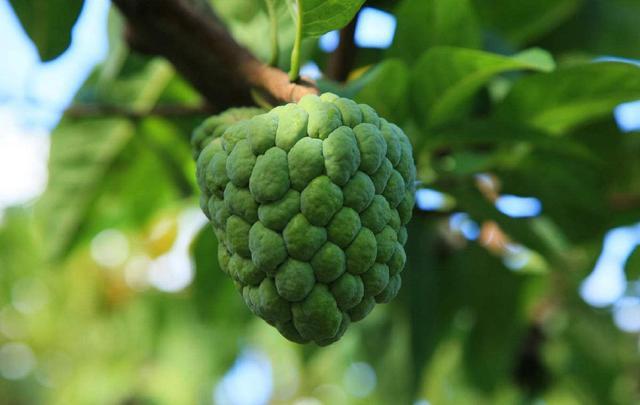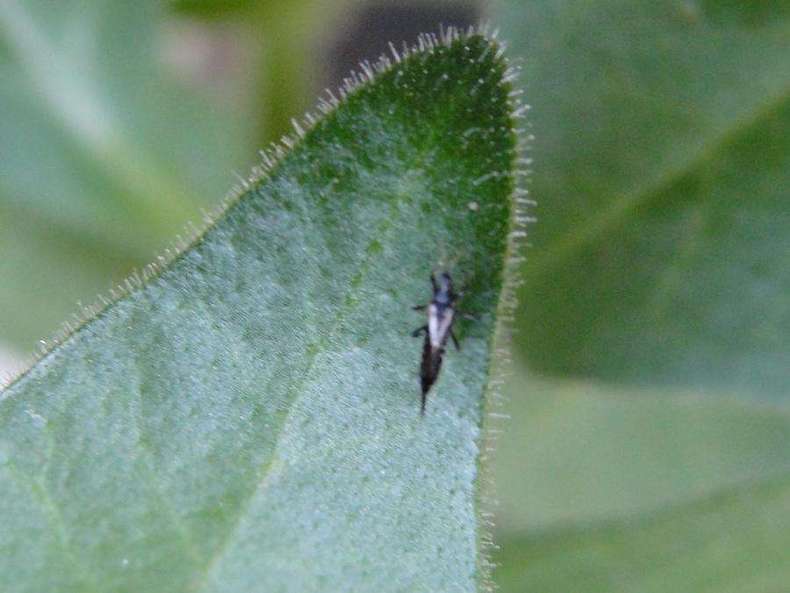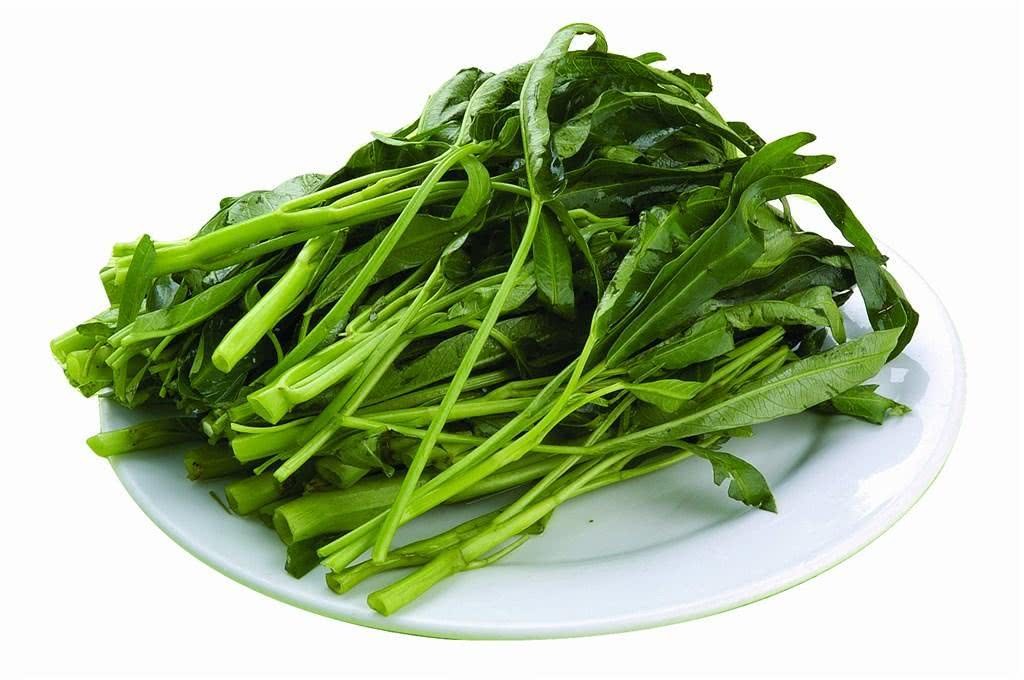Annona fruit is edible, similar to litchi, which is the best antioxidant fruit that can delay skin aging.

Annona (tropical plant)
(another name for fruit Annona) generally refers to Annona (tropical plant)
Annona (scientific name: Annona squamosaLinn.) Annonaceae, Annona is a small deciduous tree with thin, grayish bark and much branched bark. Leaves thinly papery, elliptic-lanceolate, dorsally pale green; lateral veins flattened above, raised below. Flowers solitary or 2-4 blossoming on top of branches or opposite leaves, bluish yellow; buds lanceolate; sepals triangular, puberulent; outer petals narrow and thick, oblong; stamens oblong, connective wide; carpels glabrous, 1 ovule per carpel. Aggregate berries globose or cordate conical, glabrous, yellowish green, white frosted on the outside, consisting of mostly round or oval mature carpels that are easily separated. The flowering period is from May to June and the fruiting period is from June to November.
It is cultivated in Zhejiang, Taiwan, Fujian, Guangdong, Guangxi, Hainan and Yunnan provinces in China. Native to tropical America; now cultivated in tropical regions around the world. Fruit edible, shaped like litchi, hence the name "litchi", is a famous tropical fruit, containing 2.34% protein, 0.3% fat, 20.42% sugar; seed oil content up to 20%. Bark fibers can be made into paper. The root can be used medicinally to treat acute dysentery, depression and myelopathy; the fruit can treat swelling and pain of malignant sores and tonify the spleen. Lac insect host tree.
Morphological characteristics
Small deciduous trees, 3-5 m tall; bark thin, gray-white, much branched.
Leaves thinly papery, arranged in two rows, elliptic-lanceolate, or oblong, 6-17.5 cm long and 2-7.5 cm wide, apex acute or obtuse, base broadly cuneate or rounded, dorsally pale green, initially puberulent, later glabrous; lateral veins 8-15 on each side, flattened above and raised below.
Flowers solitary or 2-4 blossoming on top of branches or opposite leaves, ca. 2 cm, bluish yellow, pendulous; buds lanceolate; sepals triangular, puberulent
The outer petals are narrow and thick, fleshy, oblong, apical acute, puberulent, valvate, inner petals very small, reduced to scalelike, puberulent.
Stamens oblong, septum wide, apex subtruncate; carpels oblong, glabrous, stigma ovate-lanceolate, 1 ovule per carpel.
Aggregate berries globose or cordate-conical, 5-10 cm in diameter, glabrous, yellowish green, white powdered on the outside. The flowering period is from May to June and the fruiting period is from June to November.
Distribution range
It is cultivated in Zhejiang, Taiwan, Fujian, Guangdong, Guangxi, Hainan and Yunnan provinces in China. Native to tropical America; cultivated in tropical regions around the world.
Growth habit
Light
Annona is light-tolerant and shade-tolerant, with sufficient light, strong plant growth and thick leaves. Increasing light at the stage of fruit development can improve fruit quality.
Temperature
Annona needs a warm climate and proper precipitation and is not resistant to frost and cold weather.
The average optimum growth temperature of Annona was 25-32 ℃, the lowest was 15-25 ℃, and the optimum average temperature for fruit ripening was 25-30 ℃.
The critical temperature for Annona fruit trees to survive the winter safely is 0 ℃.
Most of the litchi are semi-deciduous fruit trees, which enter into natural dormancy or forced dormancy caused by environmental conditions at the end of winter or early spring.
Dormancy protects plants from late frost or drought in winter and spring.
Proper low temperature in winter is beneficial to accelerate defoliation and promote sprouting.
But the effect of low temperature on sprouting is not as necessary as in other deciduous fruit trees.
The temperature during fruit ripening should be neither too low nor too high.
In the case of low temperature, especially when the temperature is below 13 ℃, physiological diseases will occur in fruits, and leaf spot will often occur, which will delay the ripening time.
And too high temperature will cause premature ripening, easy to cause fruit rot.
Moisture content
Annona is sensitive to water, and too much or too little water is not conducive to plant growth.
The growth of Annona is affected under the condition of short-term flooding, resulting in deciduous leaves and few flowers.
Irrigation or rainfall is important for flowering and early fruit setting.
During this period, there is too little water, which will lead to falling flowers and fruits and slow fruit growth.
At the same time, water can also affect fruit quality. It has been reported that the cracking rate of irrigated Annona in Australia is 9.8%, while that of unirrigated Annona is 20%.
Under the condition of low humidity (relative humidity less than 70%), the flower drop increased, the stigma dried, and the fruit setting decreased significantly.
When Annona is in full bloom in southeastern Queensland, the relative humidity during the hottest day is often less than 30%. In production, they use high-density planting, windbreak and spray to increase the humidity of the orchard.
However, too high humidity (higher than 95%) will dilute the sugar secretions on the stigma, so that the pollen germination rate is low, which is not conducive to fertilization.
Soil
Annona fruit trees have strong adaptability to all kinds of soil. It can grow on sandy to clayey soil. However, in order to obtain high and stable yield, sandy soil or sandy loam soil is better. Because the soil is sticky and heavy, poor drainage will affect flowering and fruit setting. On the other hand, the loose sandy loam does not have this malpractice, and it is easy to control its growth through fertilization and irrigation. If the soil layer is shallow, it can be cultivated to thicken the soil layer, improve drainage, and can also be covered to promote the development of absorbing roots in the topsoil layer.
Mode of reproduction
Sowing seeds
The use of seedling production is limited to common Annona, and hybrid Annona can not be used as mother tree. The source of seeds for seedling cultivation is very important, and the seeds should come from the fruits with high yield, large and correct fruit shape on the high-yield and high-quality mother plant of the good variety (common Annona).
It is best to use the same variety of artificial pollination of the fruit. When the fruit is fully ripe, the fruit is light green and yellow, and the suture line between the small fruits is obvious, the seeds will be collected.
As a grafted rootstock culture, seed collection can reduce the requirements.
After the seeds are taken out, wash them, remove non-solid seeds and small seeds, dry them and then sow them.
For example, stored seeds of Annona should be dried before sowing to promote germination.
The seeds can be soaked with gibberellin of 200ppm for 24-36 hours before sowing to promote early germination.
It is better to use fertile sandy loam in the seedbed and shake well with rotten organic fertilizer.
Repair the ditch and start the border, and the width of the border shall prevail to facilitate field operation.
Both strip sowing and sowing can be used, and the sowing rate is 7-8 kg per mu.
After sowing, cover with fine sand or fine soil, slightly compacted and drenched with water, then cover with grass or plastic agricultural film to moisturize.
Uncover the grass or plastic film after emergence to avoid bending the seedlings.
Attention should be paid to the management of water and fertilizer in the seedling stage, generally 3-4 watering once, and once a day during drought.
Topdressing can be started after 6-8 leaves to facilitate the cultivation of strong seedlings.
Grafting
Common Annona is generally used as rootstock for grafting seedlings of Annona. Such rootstocks have the characteristics of good affinity, dwarfing tree shape and early production. Grafting can only be carried out when the thickness of the rootstock reaches about 0.8 cm. Grafting time: branch grafting is generally in spring, while bud grafting is better in summer and autumn, and grafting can not survive in winter. The scion of Annona chinensis is selected from the outer branches of the mother tree, which is a strong and disease-free variety. After the scion is harvested, the leaves are cut off and the petiole 0.3-0.5 cm long is retained to reduce water evaporation. This method is suitable for the sap flow period in the growing season, so that the rootstock can peel off the bark.
Cultivation techniques
Colonization
When planting Annona, the grafted seedlings with common Annona as rootstock should be selected, and the best planting time should be in spring, especially before sprouting, and the survival rate is the highest. It can also be planted in Rain Water season from June to July, but pay attention to drainage. Stagnant water is most avoided in the root of Annona. When planting, it is best to grade the seedlings, and the seedlings transferred from other places should be soaked in water for 3-5 hours before planting. After that, the seedlings are put into a hole with a depth of 20-30 centimeters, and the water-deficient mountains can be properly deepened by 10 centimeters, so that the roots can be stretched, and the seedlings can be lifted while filling the soil. After planting, make a tree plate around, cover with straw and other mulch and pour enough fixed root water.
Fertilizer and water
The fertilization principle of Annona chinensis is scientific fertilization according to tree size and different growth stages, mainly by the application of organic fertilizer and the combination of organic fertilizer and inorganic fertilizer, gradually moving closer to green agriculture.
Generally, fertilization is applied three times a year, the first time before and after winter pruning, combined with deep ploughing and garden cleaning, the application is mainly organic fertilizer, deep digging, re-application, all organic fertilizer, and 80% phosphate fertilizer and 20% nitrogen and potassium fertilizer in the whole year.
For the second time, 35% of nitrogen fertilizer, 10% of phosphate fertilizer and 20% of potash fertilizer were applied in the period of young fruit after summer fruit flowering (May-June).
For the third time, 35% of the total nitrogen fertilizer, 10% phosphate fertilizer and 35% potassium fertilizer were applied during the period of young winter fruit (September-October).
Generally, ditches should be dug for landfill, not sprinkled. Trenches can be dug into trenches, ring, semi-ring, radial and so on.
Extra-root topdressing can also be carried out according to the situation of the tree, and extra-root topdressing is also a limited way to supplement fruit and tree nutrition. Foliar fertilizers such as plant power 2003, Tianda 2116 and potassium dihydrogen phosphate can be selected.
Moisture content
First of all, it is necessary to do a good job of drainage and irrigation facilities in the field to prevent severe drought and waterlogging. Irrigation period should be in the period from germination to flowering, shoot growth and young fruit expansion, rapid expansion, fruit harvest and dormancy, and appropriate watering according to the situation. Annona root most avoid stagnant water, so it is necessary to do a good job of drainage in the rainy season to prevent stagnant water in orchards.
Pruning
Litchi is pruned every year to maintain the shape of the tree and promote flower bud differentiation. Pruning is generally carried out twice a year, once in winter (January-March) and once in summer (June-September). The purpose of pruning is to reduce the width of the tree, dwarf the plant and arrange the shape of the tree. Winter pruning should be forced to fall leaves of the whole plant to promote flower bud differentiation and make it grow neatly. The fruiting shape of Annona is generally controlled as round head or semicircular head, and pruning is the key technology for out-of-season production.
Pest control
Anthrax
Harmful symptoms: mainly cause fallen leaves, black fruit, rotten fruit.
Control methods: during the period of shoot initiation and flower setting, spray 1-2 times, 50% carbendazim wettable powder 500x liquid or 70% topiramine wettable powder 800x-1000 times liquid.
Root rot disease
Causes: stagnant water, root injury, high temperature and humidity, the application of immature garbage fertilizer is easy to cause the disease, the application of fermented soybean bran, livestock manure and other organic fertilizer is beneficial to inhibit the occurrence of the disease.
Prevention and control methods: dig out the diseased plants and burn them in time, spread lime and sulfur powder at 10:1 on the ground, and apply 0.5kg to each plant.
Pedicle rot
Harmful symptoms: mainly cause dead seedlings, withered shoots and rotten fruit.
Chemical control: spray 1-2 times (combined with anthracnose control), 50% carbendazim wettable powder 500 times or 0.5% Bordeaux solution after shoot germination or Xiehua fruit setting period.
Red spider
Control methods: timely spraying of insects, no predatory mites can be found, and when the density of red spiders is more than 2 per leaf and tends to increase, comprehensive spraying: control with 2000 times of 1.8% avermectin EC or 1500-2000 times of 15% pyridaben or 3000-5000 times of 24% spiromites suspension.
Shell worm
Control methods: in the new shoot stage and young fruit stage in spring and autumn. Control with 2.5% deltamethrin 3000 times liquid.
Main value
Nutrition
The contents of nutrients in 100g Annona pulp tissue are as follows: moisture 8.36g, soluble solids 18.0% Mui 26%, fat 0.14% mi 0.3%, minerals 0.6% mi 0.7%, carbohydrates 23.9%, calcium 0.2%, phosphorus 0.04%, iron 1.0%, organic acids 0.42%, total sugars 15.3% Kui 18.3%, vitamin C 0.265 grams. The protein content is 1.55 grams and contains a lot of substances needed by the human body.
Health and Fitness
Annona has the effect of activating brain cells and is often used to treat brain atrophy outside China. Patients often eat Sakya, which plays an obvious role in supplementary dietotherapy for the relief of the disease. in addition, the content of Sakya fiber is high, which can effectively promote intestinal peristalsis and remove the stool accumulated in the intestine. at the same time, it is the best antioxidant fruit. it can effectively delay skin aging and whiten skin.
Since 1970, American experts have conducted more than 20 studies on Annona. The results show that the extract of Annona can effectively combat the malignant cells of 12 kinds of cancers, including colon cancer, breast cancer, prostate cancer, lung cancer and pancreatic cancer. At the same time, Annona has antifungal and antiparasite properties. In addition, it helps regulate blood pressure and is an antidepressant and broad-spectrum antibiotic.
Watch
In addition to being used as tropical fruit trees, Annona is suitable for planting in garden and green space, and the effect is good either alone or in pieces.
- Prev

Are such rose leaves harmful to thrips?
In the 14th phase of the horticultural lecture hall, the symptoms of rose leaves are: are rose thrips harmful? Let's take a look at what the leaves of the thrips look like. This issue is the 14th issue of the horticultural lecture hall. I will talk to you today.
- Next

The key to the nutritious benefits of raising pots of asparagus at home is that it is easy to raise.
As soon as autumn comes, Huahua is here to remind you to eat more vegetables, eat more fruits, drink more water and keep plenty of water to prevent drying caused by seasonal changes. Speaking of vegetables, I don't know what people like.
Related
- Wuhan Hospital Iron Tree Blooming Result Was Instantly Frightened by the Gardener Master
- Which variety of camellia is the most fragrant and best? Which one do you like best?
- What is the small blue coat, the breeding methods and matters needing attention of the succulent plant
- Dormancy time and maintenance management of succulent plants during dormancy
- Minas succulent how to raise, Minas succulent plant pictures
- What are the varieties of winter succulent plants
- How to raise succulent plants in twelve rolls? let's take a look at some experience of breeding twelve rolls.
- Attention should be paid to water control for succulent plants during dormant period (winter and summer)
- Watering experience of twelve rolls of succulent plants
- Techniques for fertilizing succulent plants. An article will let you know how to fertilize succulent plants.

